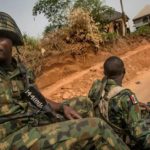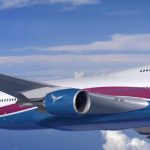North Korea launches ballistic missile that could hit anywhere in the world, defies Trump
 North Korea declared Tuesday it had successfully tested its first intercontinental ballistic missile — a watershed moment in its push to develop a nuclear weapon capable of hitting the mainland United States, reports the AFP.
North Korea declared Tuesday it had successfully tested its first intercontinental ballistic missile — a watershed moment in its push to develop a nuclear weapon capable of hitting the mainland United States, reports the AFP.
US experts said the device could reach Alaska, and the launch, which came as Americans prepared to mark Independence Day, triggered a Twitter outburst from President Donald Trump who urged China to act to “end this nonsense once and for all”.
The North’s possession of a working ICBM — something that Trump has vowed “won’t happen” — would force a fundamental recalculation of the strategic threat posed by the isolated, impoverished state.
The “landmark” test of a Hwasong-14 missile was overseen by leader Kim Jong-Un, an emotional female announcer said on state Korean Central Television.
The broadcaster showed his handwritten order to carry out the launch, and pictures of him grinning in celebration, clenching his fist.
The rocket was “a very powerful ICBM that can strike any place in the world”, the announcer said, and “a major breakthrough in the history of our republic”.
In a statement the North’s Academy of Defence Science, which developed the missile, said it reached an altitude of 2,802 kilometres and flew 933 kilometres, calling it the “final gate to rounding off the state nuclear force”.
There are still doubts whether the North can miniaturise a nuclear weapon sufficiently to fit it onto a missile nose cone, or if it has mastered the technology needed for it to survive the difficult re-entry into the Earth’s atmosphere.
But the country has made great progress in its missile capabilities since the ascension to power of Kim, who has overseen three nuclear tests and multiple rocket launches.
In response to the launch but before the announcement, Trump asked on Twitter: “Does this guy have anything better to do with his life?”
The United Nations has imposed multiple sets of sanctions on Pyongyang, which retorts that it needs nuclear arms to defend itself against the threat of invasion.
US Pacific Command confirmed the test and said it was a land-based, intermediate range missile that flew for 37 minutes before splashing down in the Sea of Japan, adding the launch did not pose a threat to North America.
Pyongyang has ramped up its missile and nuclear test programme since Kim Jong-Un came to power after the death of his father in 2011
Moscow’s defence ministry called it medium-range in a statement to Russian news agencies.
But Tokyo — in whose exclusive economic zone it came down — estimated its maximum altitude to have “greatly exceeded” 2,500 kilometres, prompting arms control specialist Jeffrey Lewis to respond on Twitter: “That’s it. It’s an ICBM. An ICBM that can hit Anchorage not San Francisco, but still.”
David Wright, of the Union of Concerned Scientists, wrote on the organisation’s allthingsnuclear blog that the available figures implied the missile had “a maximum range of roughly 6,700 km on a standard trajectory”.
“That range would not be enough to reach the lower 48 states or the large islands of Hawaii, but would allow it to reach all of Alaska.”
Japan, which sees itself as in Pyongyang’s sights, has stationed missile defence batteries in Tokyo
Japanese Prime Minister Shinzo Abe told reporters: “This launch clearly shows that the threat has grown.”
The US, Japan and South Korea will hold a summit on the issue on the sidelines of this week’s G20 meeting, he added. “Also I will encourage President Xi Jinping and President Putin to take more constructive measures.”
South Korea’s President Moon Jae-In, who backs both engagement with the North to bring it to the negotiating table and sanctions, and met Trump for a summit in Washington at the weekend, warned the North against crossing a “red line”.
“I hope North Korea will not cross the bridge of no return,” he said.
Washington, South Korea’s security guarantor, has more than 28,000 troops in the country to defend it from its communist neighbour. Fears of conflict reached a peak earlier this year as the Trump administration suggested military action was an option under consideration.








